The How Might We (HMW) framework is a powerful tool for design thinking and innovation to tackle challenges and continually guide innovation. In this ultimate guide, you’ll discover everything you need to know about the HMW framework, including how to write impactful HMW statements, real-world examples, handy templates, and practical exercises to get you started. Read on to unlock the potential of How Might We in problem-solving.
Part 1: What is the How Might We (HMW) Framework?

If you’ve ever embarked on a journey to solve a complex problem, you know how daunting it can be. This is where the "How Might We" (HMW) framework comes into play. At its core, the HMW framework helps teams break down broad challenges into manageable questions that guide ideation.
HMW statements are the foundation of this framework. They are carefully crafted questions that start with "How might we" and are designed to open up the floor for brainstorming and ideation. These statements are neither too broad nor too specific, striking a balance that allows for a wide range of creative responses.
Part 2: How Might We Framework Examples
To truly grasp the power of the HMW framework, let’s explore some real-world examples across various industries. These examples will illustrate how HMW statements can be used to tackle different types of challenges and inspire creative solutions.
Example 1: Healthcare
Challenge: Reducing patient wait times in hospitals.
HMW Statement: How might we streamline hospital processes to reduce patient wait times without compromising quality of care?
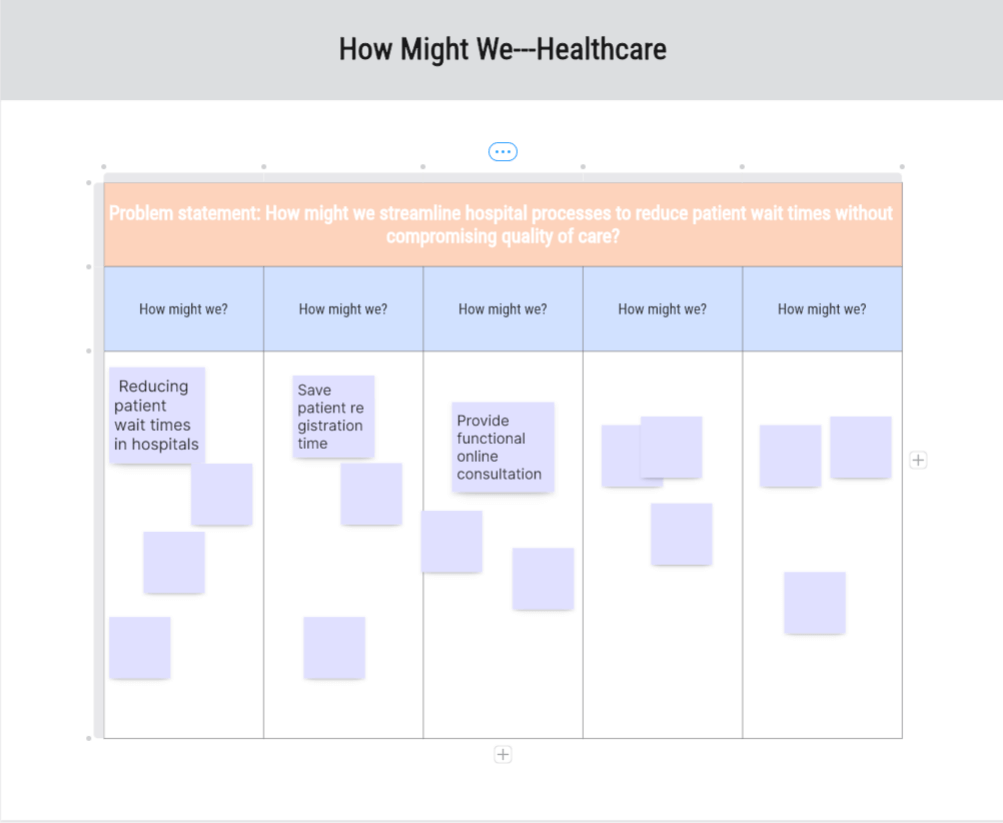
Example 2: Education
Challenge: Enhancing student engagement in online learning.
HMW Statement: How might we create more interactive and engaging online learning experiences for students?
Example 3: Retail
Challenge: Increasing customer loyalty in a highly competitive market.
HMW Statement: How might we develop unique loyalty programs that reward customers for their ongoing engagement with our brand?
Example 4: Technology
Challenge: Improving user experience in a mobile app.
HMW Statement: How might we simplify the user interface to make our mobile app more intuitive and user-friendly?
Example 5: Environmental Sustainability
Challenge: Reducing plastic waste in packaging.
HMW Statement: How might we design eco-friendly packaging solutions that minimize plastic waste and are still cost-effective?
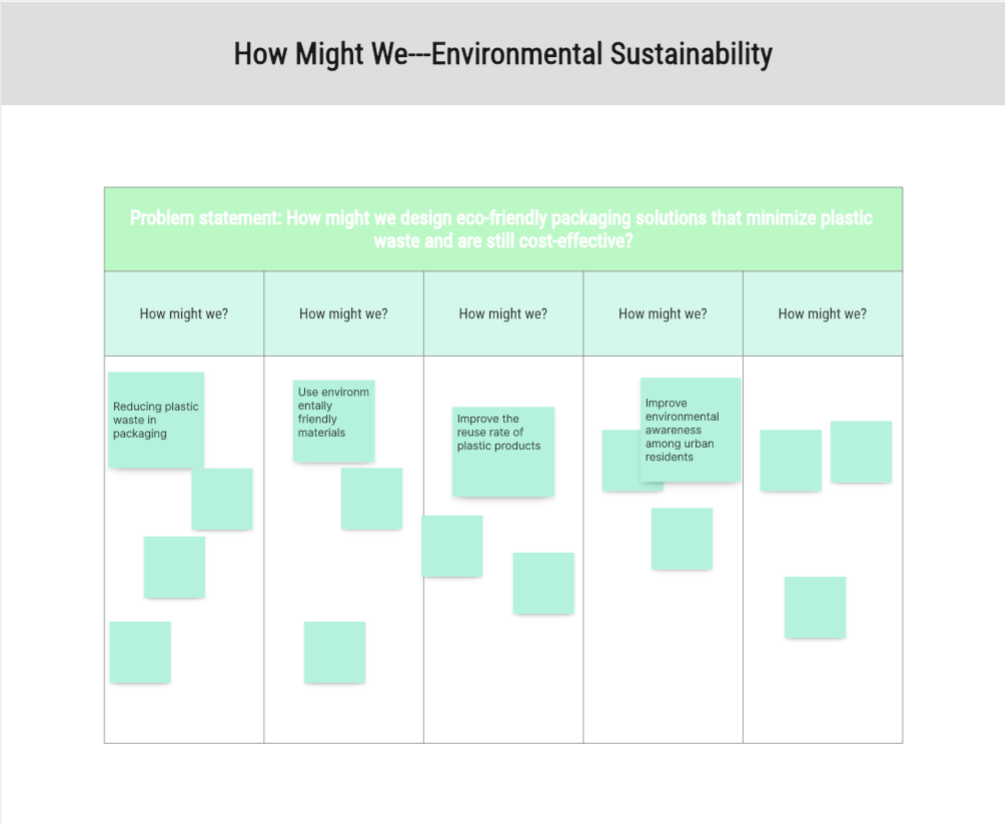
These examples demonstrate how HMW statements can transform a vague challenge into a clear, actionable question that sparks innovative thinking.
Part 3: How Do You Write a Good HMW Statement?
Writing a good HMW statement is an art that requires a deep understanding of the problem at hand and the ability to reframe it in a way that opens up possibilities.
Here are some key steps to help you craft effective HMW statements:
1. Identify the Challenge
Start by clearly defining the problem you want to solve. This involves gathering insights, understanding the context, and pinpointing the specific challenge you’re facing.
2. Break Down the Challenge
Analyze the problem and break it down into smaller components. This helps in identifying the core issues and framing them in a way that invites creative solutions.
3. Use Positive Language
HMW statements should be framed positively. Instead of focusing on what’s wrong, emphasize the potential for improvement and innovation.
4. Be Specific but Open-Ended
Strike a balance between being specific enough to provide direction and open-ended enough to allow for a range of ideas. Avoid being too narrow or too broad.
5. Focus on the User
Keep the end user in mind when crafting your HMW statement. Consider their needs, pain points, and experiences to ensure your question is relevant and impactful.
6. Test and Refine
Don’t be afraid to iterate on your HMW statement. Test it with your team, gather feedback, and refine it until it effectively guides your ideation process.
Example of Refining a HMW Statement:
Initial Challenge: Improving customer support response times.
HMW Statement: How might we reduce customer support response times?
Refined HMW Statement: How might we streamline our customer support processes to provide faster and more efficient responses to our customers?
The refined statement provides more context and focuses on streamlining processes, making it more actionable.
Part 4: How Might We Statement Template
Creating HMW statements can be made easier with a structured approach. Here’s a simple template to guide you:
HMW Statement Template
1. Define the Problem:
- What is the challenge or issue you want to address?
- Who is affected by this problem?
2. Reframe the Problem:
- How might we [action/verb] [specific aspect] to [desired outcome]?
Example Using the Template
1. Define the Problem:
- Challenge: Students are struggling to stay engaged in online classes.
- Affected: Students and teachers.
2. Reframe the Problem:
- HMW Statement: How might we incorporate interactive elements into online classes to boost student engagement and participation?
By following this template, you can systematically approach the creation of HMW statements, ensuring they are focused, relevant, and inspiring.
Access to Free How Might We Template
Boardmix is an online collaboration whiteboard that provides with free How Might We Template and enables you to share the How Might We questions for collaboration in real time. Here is the step-by-step guide on using the How Might We Template for free on Boardmix.
Step 1: Log in to Your Boardmix Account
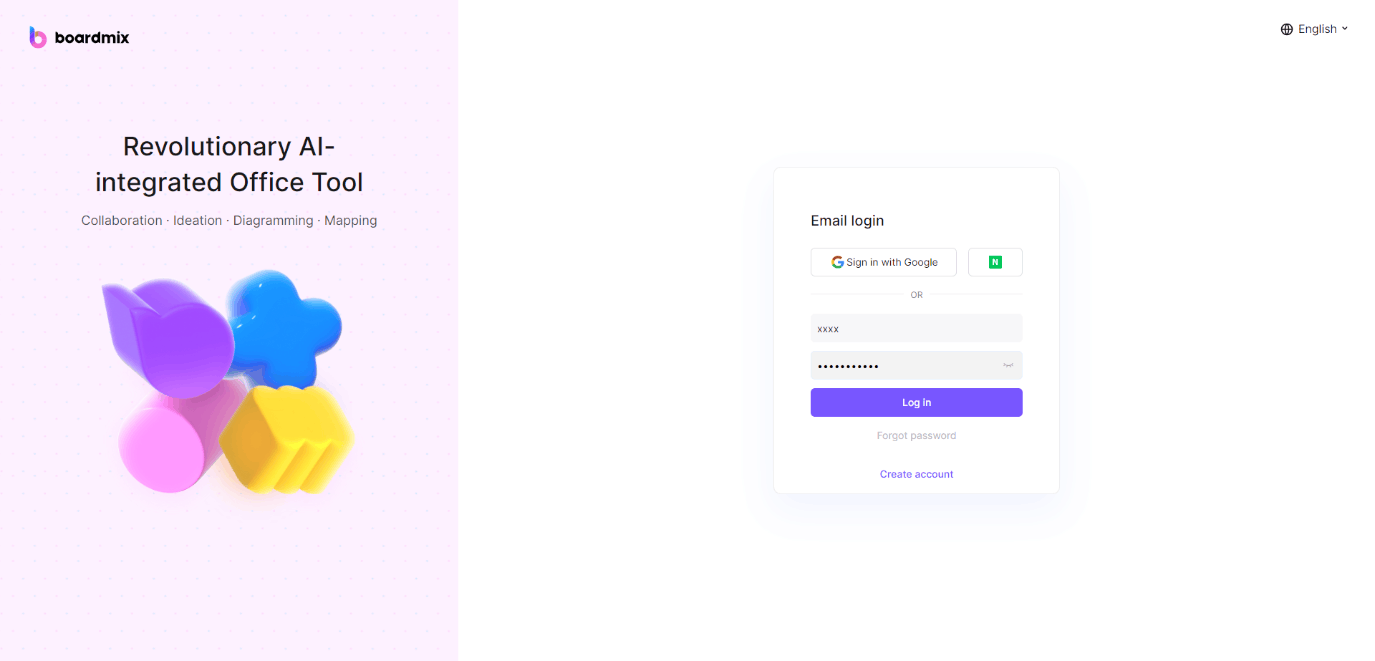
To begin, you'll need to access your Boardmix account. Go to the Boardmix website and enter your login credentials. If you don't have an account yet, you can sign up for a new one for free.
Step 2: Search and Choose How Might We Template
Once you're logged in, head over to the Template library. You can find this in the main dashboard. Search for the How Might We Template and click to use it for free.
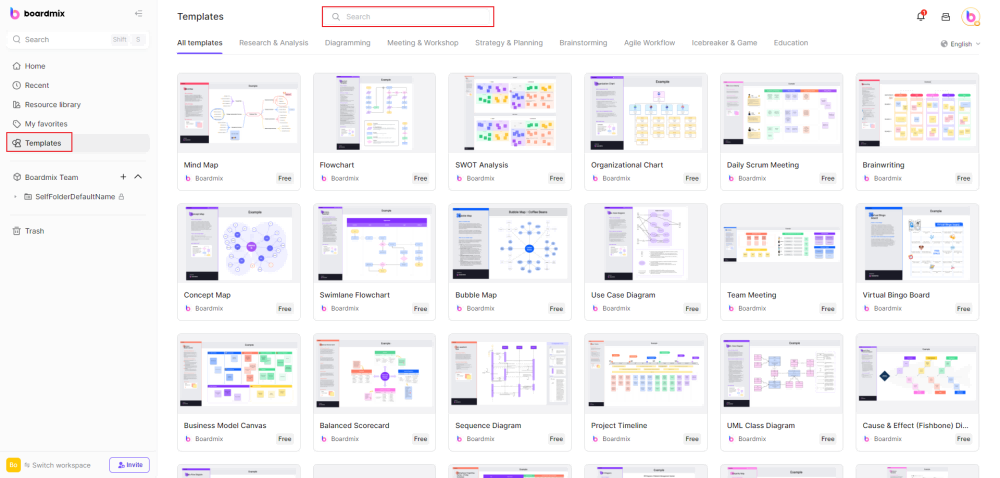
Step 3: Brainstorm and Collaborate in Real Time
When brainstorming, leverage the multi-user collaboration feature, real-time avatar, cursor, and content editing synchronization on Boardmix
Click on the "Share" button on the top right corner of the screen, copy the sharing link, and send it to anyone whom you want to collaborate with. People can join this file to edit and collaborate on this file in real time by clicking this sharing link. We encourage your team to leave comments, suggest edits, or ask questions online so you can adjust it in time.
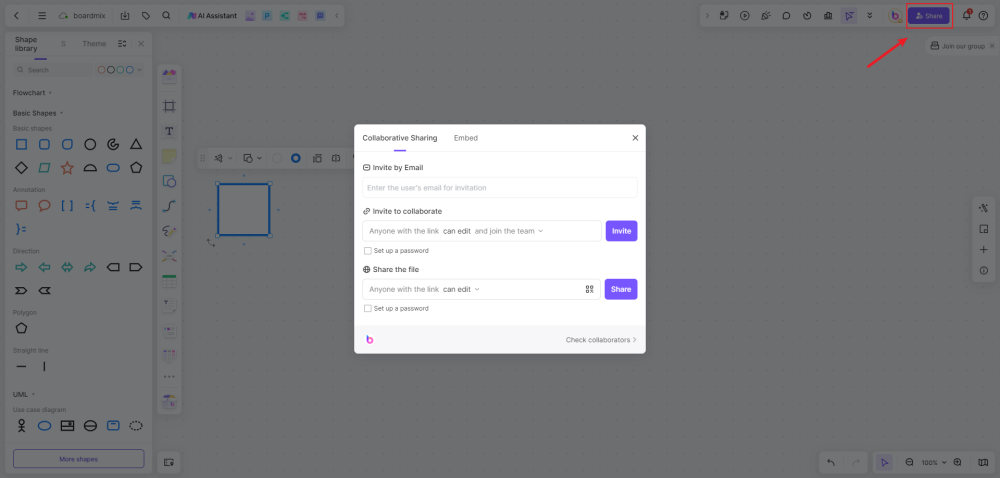
Part 5: How Might We Questions
HMW questions are the driving force behind the framework. They help to uncover hidden opportunities and inspire innovative thinking. Here are some tips and examples to help you craft impactful HMW questions:
Tips for Crafting HMW Questions
1. Start with Empathy: Understand the needs and pain points of the people involved.
2. Be Aspirational: Focus on what you want to achieve rather than what’s wrong.
3. Encourage Exploration: Frame questions that invite diverse perspectives and solutions.
4. Balance Scope: Ensure the question is broad enough to allow for creativity but specific enough to provide direction.
Example HMW Questions
1. For a Tech Company:
- How might we leverage emerging technologies to enhance user privacy and security?
2. For a Non-Profit Organization:
- How might we engage local communities to support our environmental initiatives?
3. For a Product Development Team:
- How might we redesign our product packaging to reduce environmental impact and improve user experience?
4. For a Marketing Team:
- How might we create compelling content that resonates with our target audience and drives brand loyalty?
These questions serve as starting points for ideation, encouraging teams to think creatively and explore various solutions.
How Might We Exercise
Now that we’ve covered the essentials of the HMW framework, let’s dive into a practical exercise to help you and your team generate impactful HMW statements. This exercise is designed to foster collaboration and creativity, making it ideal for workshops or brainstorming sessions.
Step-by-Step HMW Exercise
1. Set the Stage:
- Gather your team and explain the purpose of the exercise.
- Provide an overview of the HMW framework and its benefits.
2. Identify the Challenge:
- Define the problem you want to address.
- Use data, user feedback, and insights to provide context.
3. Brainstorm HMW Statements:
- Divide the team into small groups.
- Ask each group to brainstorm potential HMW statements based on the challenge.
- Encourage them to think broadly and creatively.
4. Share and Discuss:
- Have each group share their HMW statements.
- Discuss the statements, providing feedback and suggestions for refinement.
5. Refine and Prioritize:
- Work together to refine the HMW statements.
- Prioritize the most promising statements for further exploration.
6. Ideation Session:
- Use the selected HMW statements as a basis for brainstorming solutions.
- Encourage free thinking and the sharing of diverse ideas.
Example Exercise Scenario
Challenge: Increasing employee engagement in a remote work environment.
HMW Statements Brainstorming
- How might we create virtual team-building activities that foster a sense of community?
- How might we provide remote employees with tools and resources to enhance productivity and well-being?
- How might we implement flexible work schedules to accommodate different time zones and personal needs?
Refined HMW Statement: How might we develop innovative virtual team-building activities that strengthen connections and boost morale among remote employees?
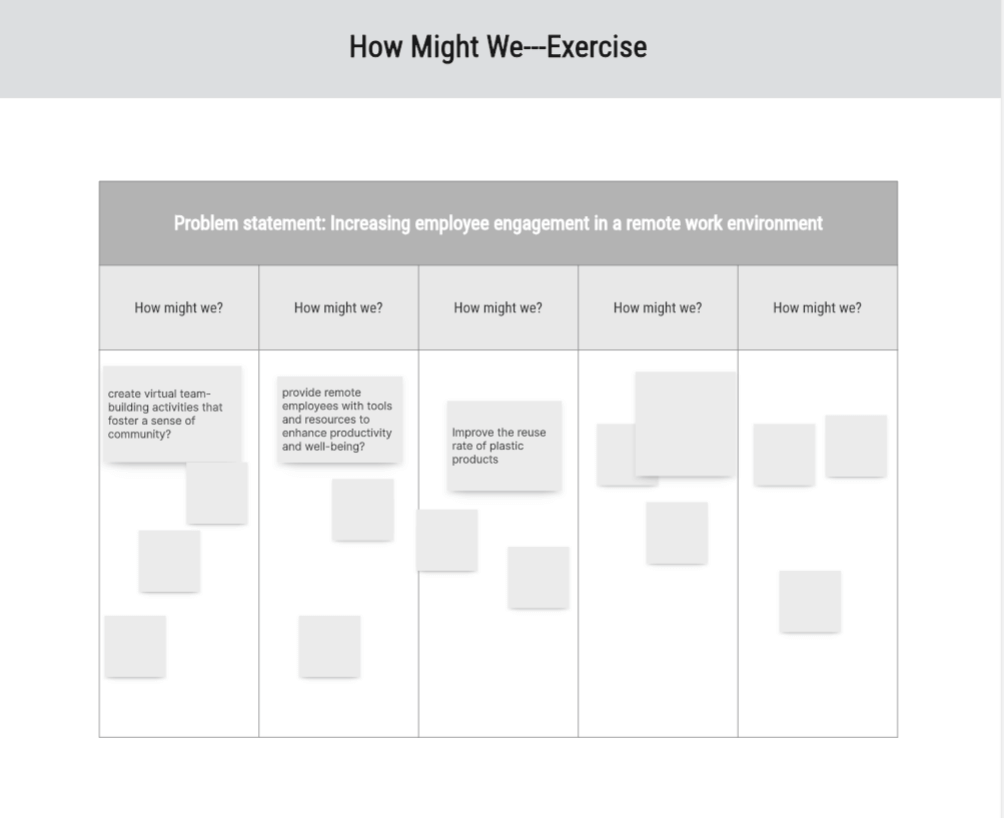
By following these steps, you can effectively utilize the HMW framework to inspire innovative thinking and generate actionable ideas.
There you have it, the ultimate guide to the "How Might We" framework. From understanding its essence to crafting impactful statements and conducting practical exercises, this guide equips you with the knowledge and tools to harness the power of HMW in your problem-solving endeavors. Boardmix Whiteboard offers an intuitive design interface, allowing users to effortlessly sketch, write, and incorporate images or documents to craft custom visuals for brainstorming, meetings, or presentations. So, the next time you face a complex challenge, remember to ask, "How might we?" and unlock the door to endless possibilities on Boardmix.
FAQ about the How Might We Frame
What is the difference between HMW and problem statement?
A problem statement is a clear, concise description of an issue that needs to be addressed. It is usually a direct, straightforward statement outlining what's wrong or what needs improvement. It focuses on the present state of affairs, identifying the gap between the current situation and the desired situation.
On the other hand, HMW questions turn problem statements into opportunities for creative exploration. They frame the problem in an open-ended way that invites a wide range of potential solutions. HMW questions inspire teams to think creatively and optimistically, opening up space for innovative ideas without presupposing any particular solution.
The primary differences between a problem statement and an HMW question lie in their perspective and use. A problem statement defines an issue or challenge to be addressed while an HMW question poses that challenge as an opportunity for creative exploration.








